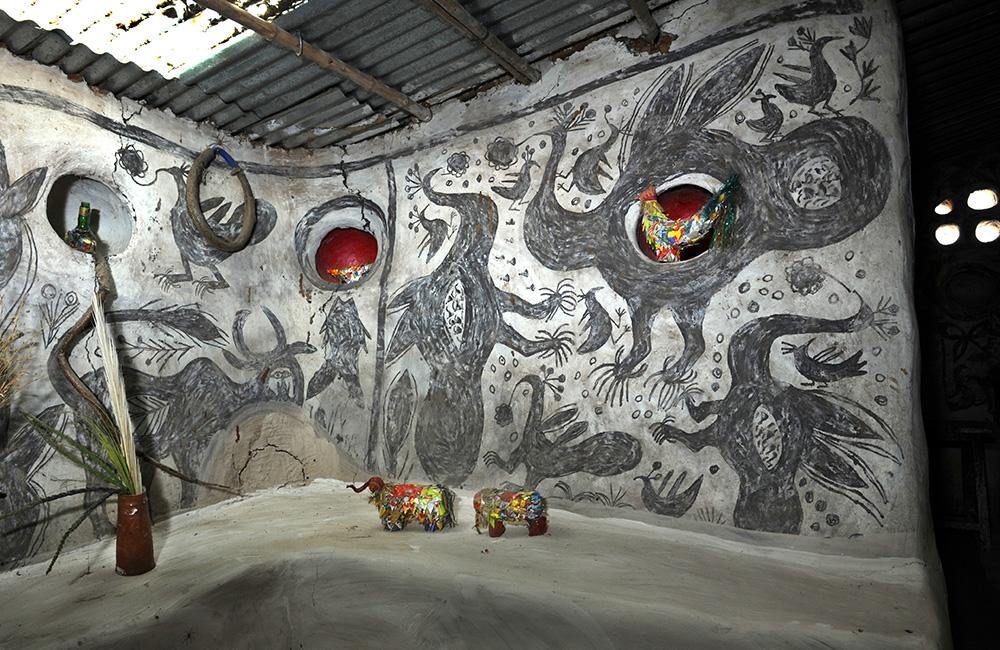First published: Summer 2019
In the Adivasi villages of north-east India, the murals on the mud house walls change with the seasons and reflect the culture of the people
The houses in the Adivasi tribal villages of Hazaribagh, in north-east India, are a sight to behold. Adorned with graphic, vibrant patterns and simple yet evocative images of wildlife, the walls seem to have a life of their own, standing out against the natural landscape.
 Exterior of a mud house in Hazaribagh, in the compound of Bulu Imam, who works to preserve the wall-painting tradition
Exterior of a mud house in Hazaribagh, in the compound of Bulu Imam, who works to preserve the wall-painting tradition
The murals are not simply for decoration nor are they a gratuitous expression of creativity; they are produced by the married women of the villages in celebration of particular festivals and ceremonies, both religious and secular. The making of the murals is ongoing task because, with the arrival of the seasonal rains, the designs get blurred and washed away, so that patches of the plain, mud-hut walls beneath reappear. When the next celebration comes around, the women start painting the walls all over again.
The Adivasi tradition of house painting is centuries old; some say, it is rooted in prehistoric rock art. Passed from generation to generation, mothers and aunts to daughters and nieces, the practice occurs across the region’s different tribes, such as the Oraons, Santals, Mundas, Ganjs and Kurmis. There are a dozen or so different styles of house painting, but within those styles the murals are personal to the tribe and to the artist, variations even occurring from house to house. The Adivasi consider their homes to be sacred, and daubing their walls with art is an expression of faith, identity, culture, pride, family, love, thanks and more.

The two most significant types of wall art are Khovar and Sohrai. Khovar wall paintings appear from January to June, the wedding season. The marriage designs, which are intended to transform the houses into “bridal chambers”, can only be drawn by married women, known as Devi after the Indian mother god. The bride’s mother, aunts and other female relatives work to get the hut ready for the wedding night when the bridegroom will stay in his new wife’s home. The artists start by covering the house walls – external and sometimes internal – with black earth (manganese). Once dry, the black base coating is covered, section by section, with white earth (kaolin). Using broken combs, bamboo sticks or their fingers, the women scratch designs into the still-damp white surface of each section to reveal the contrasting black beneath, a technique called comb cutting or sgraffito. They draw quickly, freely, filling their mud canvases with birds, animals, leaves, flowers, hearts, doorways and swirls. They are simple, spontaneous renderings but they often carry symbolic meanings and good wishes for the newlyweds. The interior murals can last for many years but – when the monsoons arrive in June – the striking black and white artwork, that has been so painstakingly drawn on the external walls, bleeds away into the earth.
This is an article extract; read the full article in Raw Vision #102




